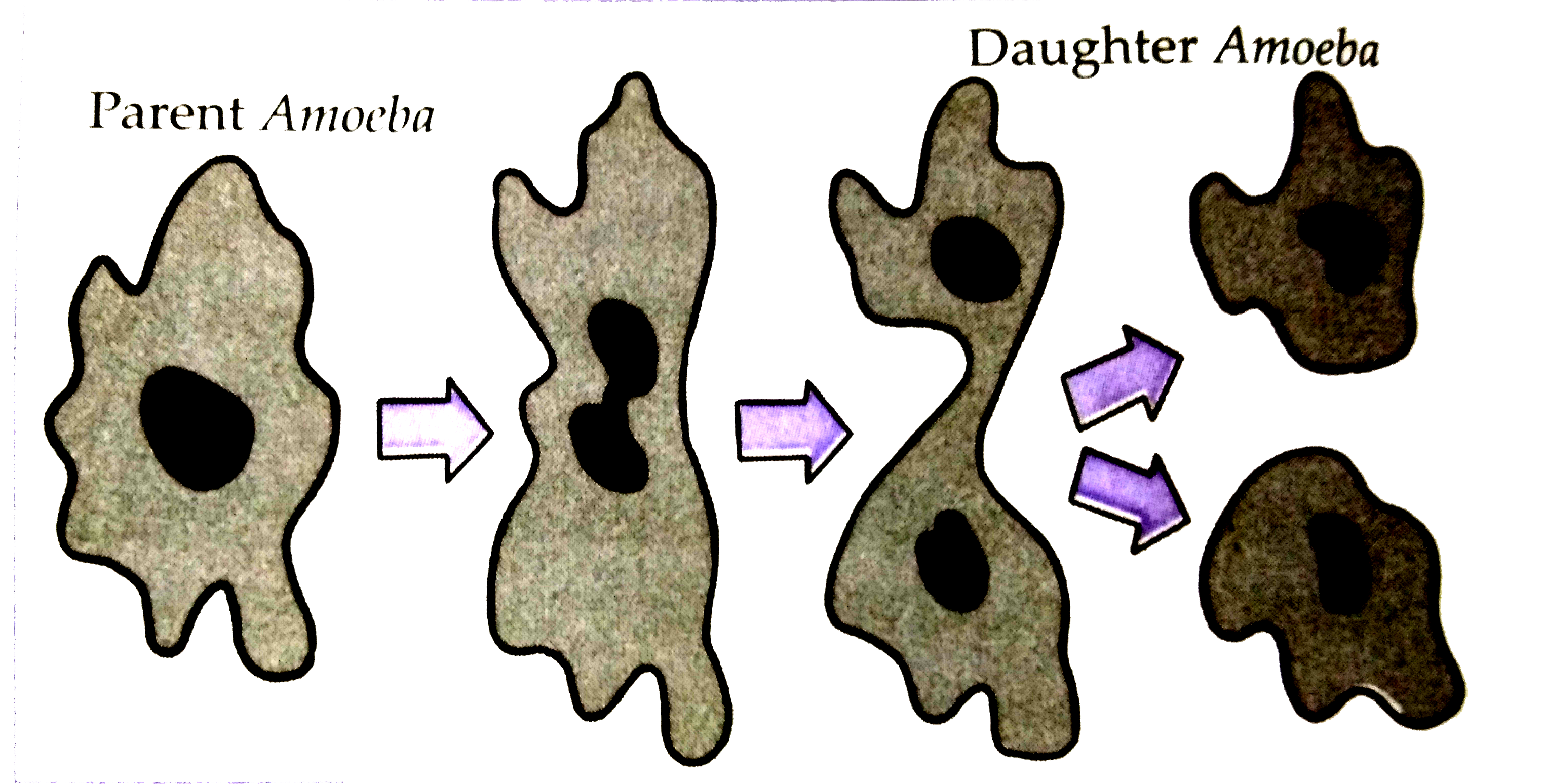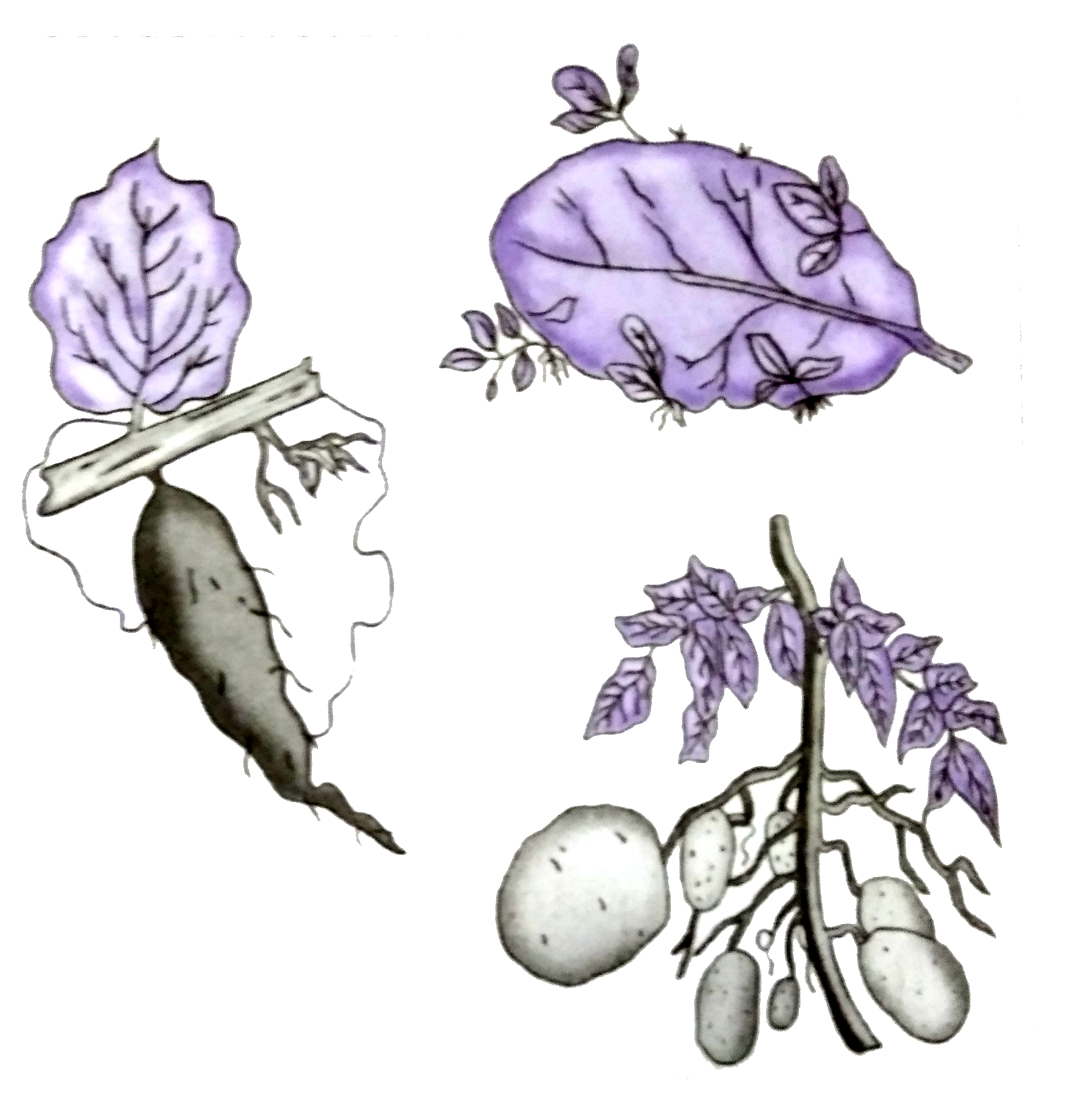Explain with examples types of asexual reproduction in unicellular organisms.Solution in Tamil
(i) Process of formation of new organism by an organism of same species without involvement of gametes is called as asexual reproduction.
(ii) Types of asexual reproduction in unicellular organisms:
(a) Binary fission :
(i) In this process, the parent cell divides to form two similar daughter cells.
(ii) Binary fission occurs either by mitosis or amitosis . e.g., Prokaryotes (bacteria ), Protists (Amoeba ) .

(b) Multiple fission :
(i) Asexual reproduction by multiple fission is performed by Amoeba.
(ii) Amoeba stops the formation of pseudopodia whenever there is lack of food.
(iii) It becomes rounded and forms protective covering around plasma membrane. Such encysted Amoeba is called as cyst.
(iv) Many nuclei are formed by repeated nuclear division in the cyst.
(v) It is followed by cytoplasmic division and thus many amoebulae are formed.
(vi) They remain encysted till there are adverse conditions. Cyst breaks open on arrival of favourable conditions and many amoebulae are released.

(c) Budding :
(i) Sexual reproduction occurs by budding in yeast cells.
(ii) Yeast cells produces two daughter nuclei by mitotic division.
(iii) A small bulge appears on the surface of parent cell. This is called as bud.
(iv) One of the two daughter nuclei enters this bud.
(v) After sufficient growth, bud separates from the parent cell and starts to live independently as a daughter yeast cell.
Topper's Solved these Questions
- LIFE PROCESSES IN LIVING ORGANISM PART-2BOOK - CHETAN PUBLICATIONCHAPTER - LIFE PROCESSES IN LIVING ORGANISM PART-2EXERCISE - Assignment-3 (Answer the following).
3 Videos
- LIFE PROCESSES IN LIVING ORGANISM PART-2BOOK - CHETAN PUBLICATIONCHAPTER - LIFE PROCESSES IN LIVING ORGANISM PART-2EXERCISE - Assignment-3 (Choose and write the correct option ).
2 Videos
- LIFE PROCESSES IN LIVING ORGANISM PART-2BOOK - CHETAN PUBLICATIONCHAPTER - LIFE PROCESSES IN LIVING ORGANISM PART-2EXERCISE - Observe the figure
10 Videos
- INTRODUCTION TO MICROBIOLOGY BOOK - CHETAN PUBLICATIONCHAPTER - INTRODUCTION TO MICROBIOLOGY EXERCISE - Assignment - 7
12 Videos
- LIFE PROCESSES IN LIVING ORGANISMS PART-1BOOK - CHETAN PUBLICATIONCHAPTER - LIFE PROCESSES IN LIVING ORGANISMS PART-1EXERCISE - Assignment-2
11 Videos
Similar Questions
Fill in the blanks .
Implantation of embryo occurs in ..............
View SolutionYeast reproduces by ____________
View Solution
Which method of reproduction is shown in the diagram?
View SolutionAcetic acid is bleached with the help of ……….
View SolutionOur muscle cells perform ………………. Type of respiration during exercise.
View SolutionEnumerate the differences between asexual and sexual reproduction. Describe the types of asexual reproduction exhibited by unicellular organisms.
View Solutionएककोशिकीय प्राणियों में अलैंगिक जनन की सामान्य विधि क्या है ?
View SolutionExplain with example types of asexual reproduction in unicellular organism.
View SolutionExplain with example types of asexual reproduction in unicellular organism.
View SolutionIs cell division a type of reproduction in unicellular organisms? Justify.
View SolutionEnumerate the differences between asexual and sexual reproduction. Describe the types of asexual reproduction exhibited by unicellular organisms.
View SolutionEnumerate the differences between asexual and sexual reproduction. Describe the types of asexual reproduction exhibited by unicellular organisms.
View SolutionAnswer briefly : Explain with example types of asexual reproduction.
View SolutionExplain the types of simplest method of asexual reproduction in unicellular organisms.
View SolutionExplain with examples types of asexual reproduction in unicellular organisms. Binary fission
View Solution
